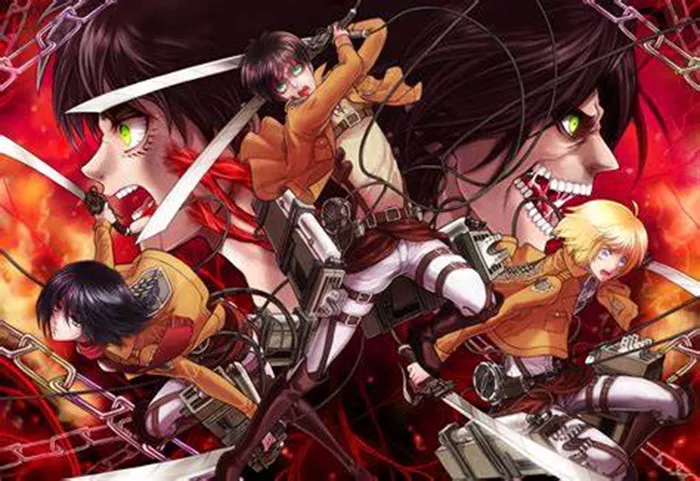The acclaimed anime series Attack on Titan, based on Hajime Isayama’s manga, showcases several notable differences that set it apart from its source material. Isayama’s involvement in the anime adaptation led to key changes in tone and presentation, particularly towards the series’ conclusion. While the core narrative remains intact, these modifications result in a lighter tone in the anime, which has drawn mixed responses from fans.
1. Annie’s Transformation as the Female Titan
In the anime, Annie Leonhart’s reveal as the Female Titan features a maniacal laugh, enhancing her villainous persona. Unlike the manga, where her transformation is more subdued and resigned, the anime amplifies the drama by showcasing her excitement and eagerness to fight the Survey Corps, ultimately presenting her as more deranged in her former comrades’ eyes.
2. Recognition During Eren’s Transformation
When Eren first transforms into a Titan during a fight with the Titans, the anime alters the moment of recognition. While Armin identifies him first in the manga, it is Mikasa who rushes to Eren’s side in the anime. This change strengthens their bond early in the series, emphasizing Mikasa’s importance in Eren’s life after he saves Armin.
3. Censorship of Violence
Despite its graphic nature, the anime downplays the brutal violence depicted in the manga. For instance, Carla Yeager’s death is largely off-screen in the anime, while the manga gives each gruesome detail its own panel, underscoring the vulnerability of humanity against the Titans. This choice aligns with the anime’s aim to appeal to a broader audience, though it remains one of the more violent series available.
4. Enhanced Introduction of Side Characters
The anime provides deeper insights into side characters like Connie, Jean, and Sasha by introducing them earlier in the storyline. In contrast, the manga includes their backstories through flashbacks, making the anime adaptation’s approach more engaging for viewers, who appreciate the additional screen time devoted to these characters.
5. Commander Erwin’s Potential Love Life
While Commander Erwin’s presence in the series is impactful, the manga introduces a backstory involving a love interest named Marie. This detail adds depth to Erwin’s character, showcasing his sacrifice of personal happiness for the greater good of humanity, a nuance that is absent in the anime.
6. Eren’s Rage Form
The anime introduces a visual representation of Eren’s rage during his fight against Annie, where his body appears to ignite with anger. This striking visual element does not exist in the manga, where Eren’s fury is expressed through action rather than appearance. This addition emphasizes his emotional state, enhancing the intensity of the battle.
7. Mikasa’s Characterization
In the anime, Mikasa’s dialogue is significantly reduced, with her primarily uttering Eren’s name in various emotional contexts. This contrasts sharply with her more nuanced character in the manga, where she demonstrates her intelligence and emotional depth through fuller sentences. The anime’s portrayal risks minimizing her complexity, reducing her to a one-dimensional figure.
8. Historia’s Optimistic Speech
The tone of Historia’s concluding speech is notably altered in the anime. In the manga, she expresses a pessimistic view, suggesting that the conflict will persist until either Eldia or the world is destroyed. The anime shifts this narrative to a more hopeful message, portraying Eren’s actions in a kinder light and offering a more uplifting perspective on their struggle.
9. The Significance of the First Panel
The manga opens with a poignant moment in which Mikasa bids farewell to Eren, foreshadowing their intertwined fates. The anime postpones this scene, potentially to avoid confusion for viewers. However, this alteration detracts from a significant emotional moment that could enhance the story upon rewatching.
10. Armin’s Confrontation with Eren
In the finale, Eren’s drastic decision to kill a vast majority of the population leads to a tense conversation between him and Armin in the Paths. The anime expands on this dialogue, allowing Armin to articulate his discontent with Eren’s methods while acknowledging the sacrifices made for their cause. This change provides a more nuanced understanding of Eren’s character and the implications of his choices.
In summary, while both the Attack on Titan anime and manga tell a compelling story, these differences highlight the unique narrative approaches each medium offers, enriching the overall experience for fans.
Related Topics
What Is The Identity Of Imu In One Piece?
What Makes Jujutsu Kaisen So Overrated?


